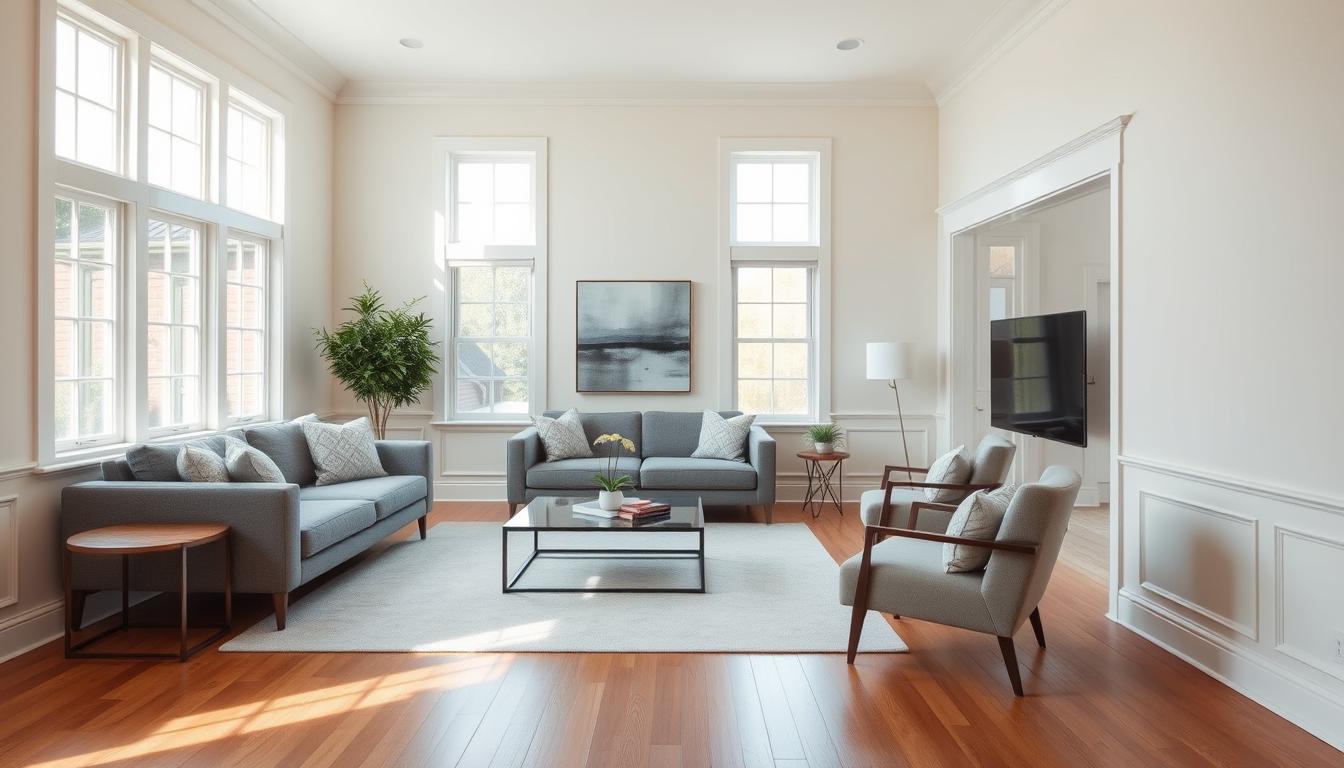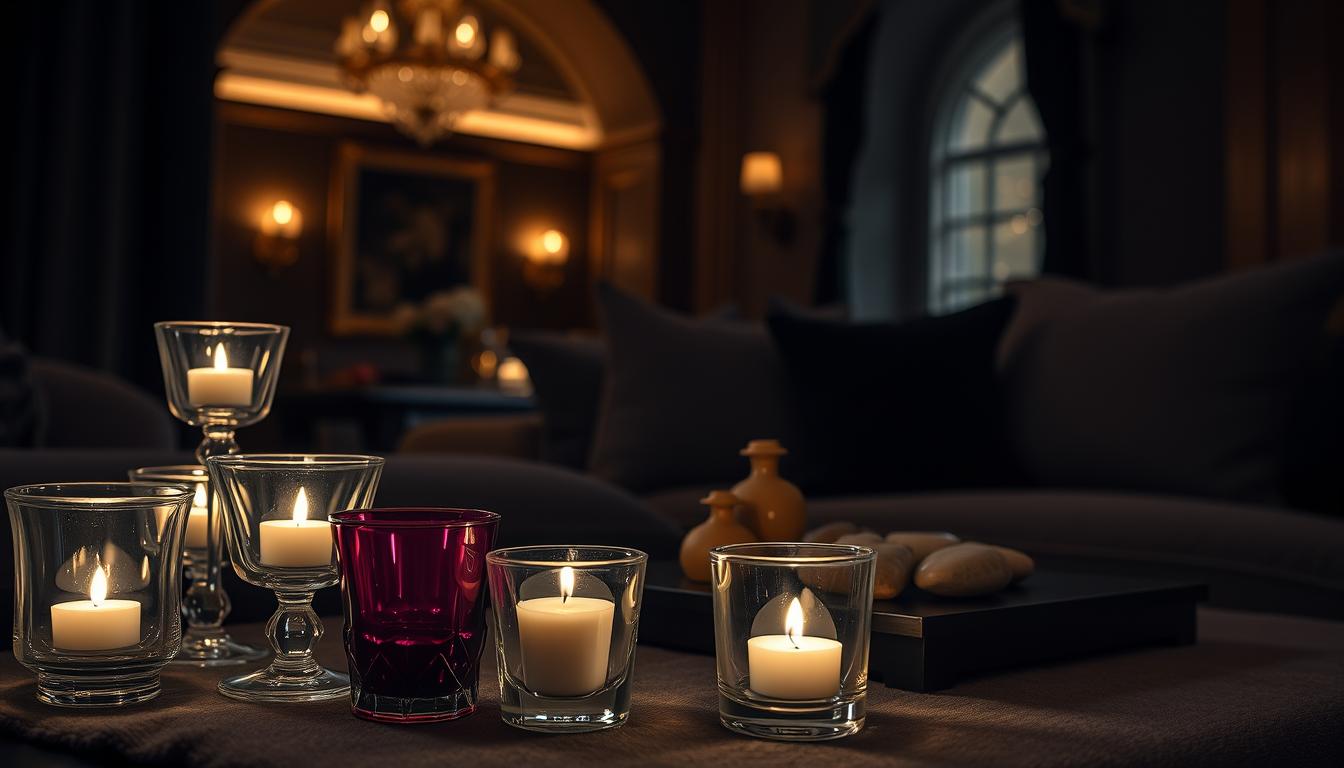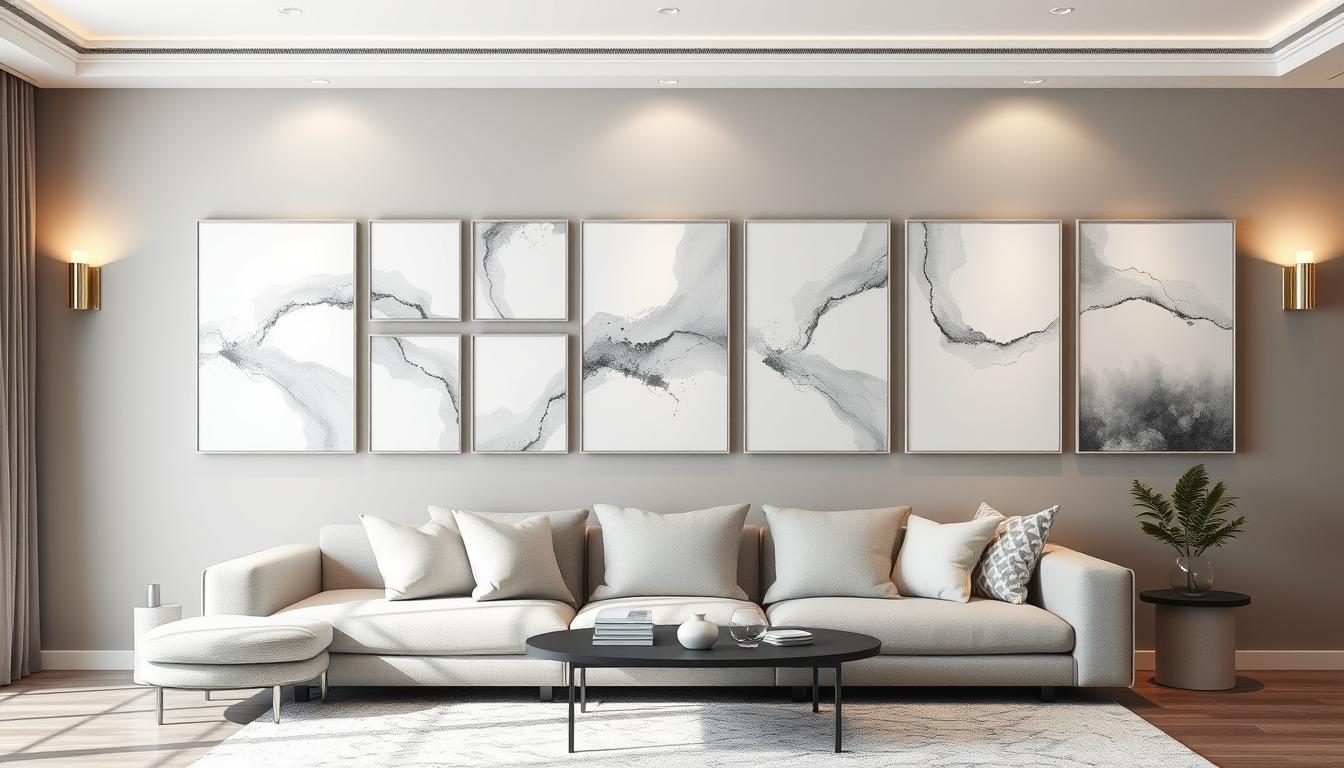Painting your home’s interior can be a big job. Knowing the costs is key for planning your budget. The price for interior house painting changes based on your home’s size, paint type, and if you hire pros or do it yourself.
The cost can be anywhere from a few hundred to several thousand dollars. It’s important to get a clear estimate. We’ll explain what affects the cost and give you a detailed guide for your interior painting project.
Key Takeaways
- Understand the factors that influence the cost of painting your home’s interior.
- Learn how to estimate the cost based on the size of your home and the type of paint used.
- Discover tips for reducing the cost of your interior painting project.
- Find out whether hiring a professional or doing it yourself is more cost-effective.
- Get a comprehensive guide to help you plan your interior painting project.
Understanding the Factors That Affect Interior Painting Costs
Many things can change how much it costs to paint the inside of your home. Knowing these can help you plan your budget better. It’s important to think about what affects the total cost when you decide to paint your home’s interior.
Size of the Space
The size of the area you want to paint is a big factor in cost. Bigger areas need more paint and might take longer to do, which raises the price. To figure out the cost, look at the painting cost per square foot. This number can change based on where you live and other things.
| Space Size (sq ft) | Average Paint Cost | Labor Cost | Total Cost |
|---|---|---|---|
| 100-200 | $100-$300 | $200-$400 | $300-$700 |
| 200-500 | $300-$800 | $400-$1,000 | $700-$1,800 |
| 500-1,000 | $800-$1,500 | $1,000-$2,500 | $1,800-$4,000 |
Type of Paint Used
The paint you choose also plays a big role in the cost. Paints with special features like low VOC or special finishes cost more. Think about how long you want the paint to last and the look you want. These choices will affect your home interior painting estimate.
Complexity of the Job
The job’s complexity is another key factor. Jobs that need a lot of prep work, like fixing walls or taking off old paint, cost more. Also, painting tricky spots like ceilings or areas with lots of corners and edges can add to the price.
- Preparation work: Repairing holes, sanding surfaces
- Removing old paint or wallpaper
- Painting complex areas: ceilings, corners, edges
Knowing these factors helps homeowners get a better idea of what painting their home’s interior will cost. This way, they can make smart choices about their budget.
Average Cost Estimates by Room
To plan your interior painting budget, knowing the average costs for different rooms is key. The cost can change a lot from one room to another. This depends on the room’s size, the surface condition, and the paint type.
Living Room
The living room is usually the biggest room in a house. It needs more paint than other rooms. The cost to paint a living room can be from $300 to $1,000. This depends on its size and the job’s complexity.
For a professional interior painting service, expect to pay about $500 to $700 for a standard-sized living room.
- Small living room (less than 200 sq. ft.): $300-$500
- Medium living room (200-400 sq. ft.): $500-$700
- Large living room (more than 400 sq. ft.): $700-$1,000
Bedrooms
Bedrooms need less paint than living rooms but the cost can still vary. The average cost to paint a bedroom is between $200 and $600. Here are some estimates for a room painting quote:
- Small bedroom: $200-$300
- Medium bedroom: $300-$500
- Large bedroom: $500-$600
Kitchens and Bathrooms
Kitchens and bathrooms need special paints because of moisture and cleaning needs. Painting these rooms can cost more. You can expect to pay between $300 and $800. The cost depends on the room’s size, cabinet number, and paint type.
When planning your painting project, remember these estimates. Think about each room’s specific needs. This helps you make a better budget and avoid surprises.
DIY vs. Hiring a Professional Painter
Choosing whether to paint your home yourself or hire a pro is a big decision. It depends on your budget, home size, and what you prefer. Both options have their good and bad sides.
Pros and Cons of DIY
Doing it yourself can save you money. You won’t have to pay for labor, which is a big part of the cost. But, painting a whole house is hard work, even if you’re good at it.
DIY painting has its benefits:
- It’s cheaper because you save on labor
- You get to control the painting process
- It’s rewarding to finish a project yourself
But, there are downsides too:
- It takes a lot of time and effort
- It can be tricky if you’re new to painting
- You’ll need to buy or rent tools and supplies
When to Hire a Professional
Hiring a pro ensures your home looks great and saves you time. They know how to paint well and can help with color choices. Even though it costs more, it’s worth it for big or tricky jobs.
Get a pro if:
- Your painting job is big or complicated
- You’re busy or not good at painting
- You want top-notch results and are willing to pay for it
Here’s a look at the costs of DIY versus hiring a pro:
| Cost Component | DIY Costs | Professional Costs |
|---|---|---|
| Paint | $200-$500 | $200-$500 |
| Labor | $0 (your time) | $1,000-$3,000 |
| Equipment and Supplies | $100-$300 | Included in labor costs |
| Total | $300-$800 | $1,200-$3,500 |
DIY can save you money on labor, but hiring a pro gets you a better finish. It also saves you time and stress. Your choice depends on your budget, what you like, and how hard the job is.
“The key to a successful painting project is preparation. Whether you choose to DIY or hire a professional, make sure you’re prepared for the task ahead.”
Additional Costs to Consider
To fully understand the cost of painting your home’s interior, you must look at more than just paint. There are other expenses that add up.
Preparation and Repair Work
Before you start painting, you might need to fix holes in walls and sand surfaces. Removing old paint is also part of the process. These steps can increase your total cost, depending on how much work is needed.
- Inspecting walls for damages or holes
- Sanding down rough surfaces to ensure a smooth finish
- Removing old paint or wallpaper
- Repairing or replacing damaged trim or molding
Supplies and Equipment
You’ll also need various supplies and equipment to finish the job. This includes brushes, rollers, drop cloths, and painter’s tape. The quality and brand of these items can affect your costs. For example, using high-quality brushes might cost more but will give a better finish.
Essential supplies to budget for:
- Paintbrushes and rollers of various sizes
- Drop cloths to protect floors and furniture
- Painter’s tape for clean edges
- Ladders or scaffolding for safe access
Disposal Fees
After you’re done painting, you’ll have leftover paint and materials to dispose of. The cost of disposal can vary based on local rules and the amount of waste. Some places have special rules for disposing of paint and hazardous materials, which can add to your expenses.
Consider the following when budgeting for disposal:
- Checking local regulations for paint disposal
- Calculating the cost of disposing of hazardous materials
- Exploring recycling options for leftover paint
Understanding these extra costs helps you estimate the total cost of your painting project. By including preparation and repair, supplies and equipment, and disposal fees, you can make a more accurate budget.
How to Get an Accurate Quote
Before starting your interior painting project, it’s vital to understand how to secure a quote that reflects the true cost of the work. Whether you’re hiring a professional or doing it yourself, a detailed quote is key for budgeting.
Requesting Estimates
When asking for estimates, give all the details to contractors or suppliers. Include the area size, paint type, and any special needs, like eco-friendly paints or specific colors.
- Measure the rooms accurately to provide the correct dimensions.
- Specify the number of coats you want.
- Mention any repairs or preparation work needed.
Asking the Right Questions
To get a full quote, ask the right questions. Find out about the type of paint, project timeline, and labor costs. Here are some important questions:
- What is included in the quote (materials, labor, cleanup)?
- Are there any additional fees or charges?
- Can you provide references or examples of previous work?
By asking these questions and giving detailed info, you can compare quotes well. This helps you pick the best option for your home interior painting estimate. Aim for a balance between cost and quality for a job you’ll be happy with.
When looking at quotes from professional interior painting services, think about more than just the price. Consider the services, material quality, and the contractor’s reputation. A higher quote might be worth it for better materials or a work warranty.
Seasonal Considerations for Painting
The season you choose to paint your home’s interior can affect the cost and quality. You can paint at any time, but some seasons are better than others.
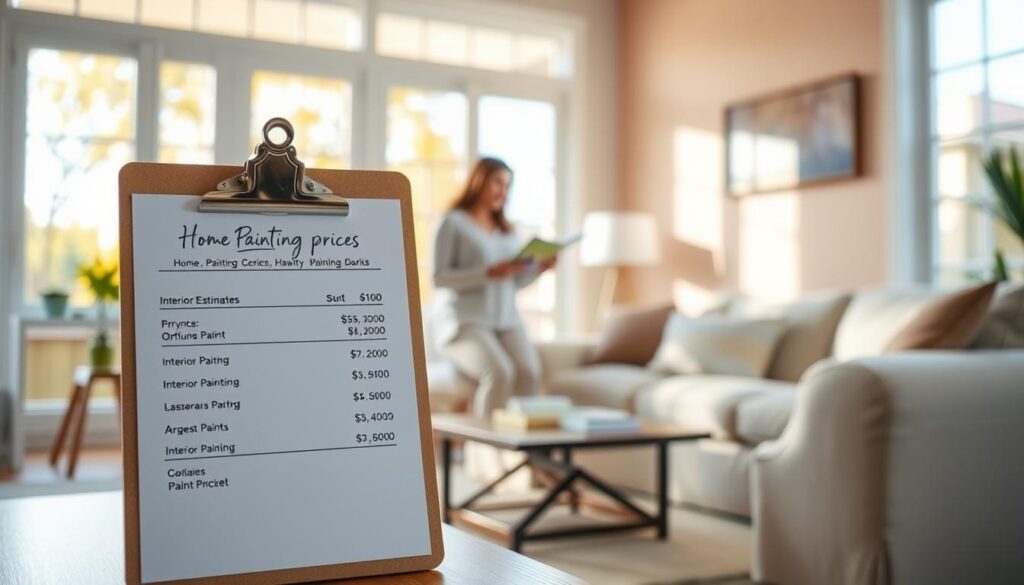
Knowing when to paint can save you money and ensure a great finish. Let’s look at why some seasons are better for painting.
Year-Round Opportunities
In mild climates, you can paint your home’s interior all year. But, it’s still smart to think about the season you choose.
Contractor availability is key. In the off-season, they might offer better prices or discounts. This can make painting more affordable.
Best Times to Paint
The best times to paint are spring and fall. These seasons have moderate temperatures and lower humidity levels. This makes painting easier and better.
- Spring: Warmer weather and lower humidity make it perfect for painting.
- Fall: Comfortable temperatures and low humidity are also great for painting.
Try to avoid painting in extreme weather. High humidity or very hot temperatures can mess up paint drying and quality.
Tips for Reducing Painting Costs
There are ways to make painting your home’s interior cheaper. By knowing what you need and planning well, you can save a lot. This makes your painting project more affordable.
Buying Paint in Bulk
Buying paint in bulk is smart for big projects. You get a better deal when you buy more. But, make sure you have enough space for it and don’t overbuy.
When you buy a lot, check the color consistency and finish. This ensures all paint looks the same. It’s key for big areas or projects done in parts.
Timing Your Project
Timing your painting project right can save you money. Stores often have sales or discounts during certain times. Plan your project for these times to save on paint and supplies.
Also, think about hiring a house painting service near me when they’re not busy. They might offer discounts to keep work steady. Getting quotes from different services can help you find the best price.
Using these tips, you can cut down on painting costs without losing quality. Whether it’s one room or your whole house, planning helps save money.
Choosing the Right Color and Finish
Choosing the right color and finish for interior painting is more than just looks. It’s about creating a mood and making sure the paint lasts. Different colors and finishes cost differently and last for varying lengths of time.
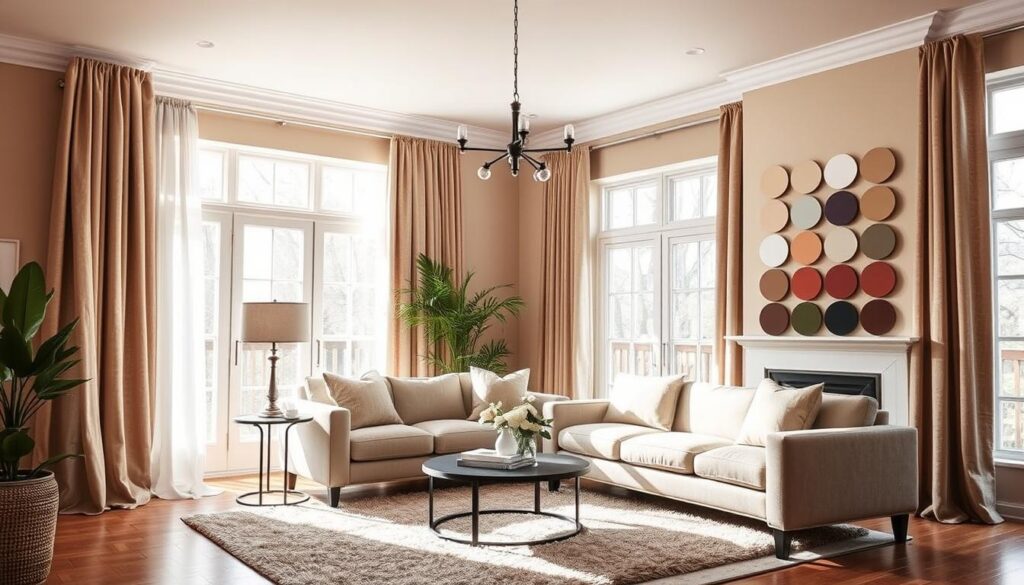
Color Psychology
Colors can change how a room feels. Cool colors like blues and greens calm you down. Warm colors like oranges and reds make you feel more energetic. Knowing how colors affect us is key when picking colors for your walls.
Key Considerations for Color Selection:
- The purpose of the room
- The amount of natural light
- Personal preferences and style
Benjamin Moore says, “The right color can change a room, making it feel bigger, cozier, or more lively.” Picking a color that fits your needs and taste is very important.
Different Types of Paint Finishes
The finish of your paint affects how it looks and lasts. You can choose from flat (matte), eggshell, satin, semi-gloss, and high-gloss finishes. Each has its own look, benefits, and best uses.
| Finish Type | Characteristics | Best Use |
|---|---|---|
| Flat/Matte | Non-reflective, hides imperfections | Low-traffic areas, ceilings |
| Satin | Soft sheen, durable | Trim, doors, high-traffic areas |
| Semi-gloss | High sheen, easy to clean | Trim, doors, kitchens, bathrooms |
Talking to professional interior painting services about your options is crucial. They can help pick the best color and finish for your project based on their experience and your needs.
“The finish you choose can make a big difference in how long your paint lasts and how easy it is to clean. Think about durability and cleaning ease when you decide.”
By carefully choosing your color and finish, you can get a beautiful, lasting paint job. This will not only improve your home’s value but also your quality of life.
Maintaining Your Freshly Painted Interior
Keeping your interior paint looking good is key to making it last longer. A well-kept paint job makes your home look better and protects your walls. It’s important for both looks and durability.
Touch-Up Techniques
Minor scuffs and marks can happen over time, even with a great paint job. To keep your walls looking new, it’s crucial to fix these spots quickly. Begin by cleaning the area with a damp cloth to get rid of dirt or grime.
If the mark doesn’t go away, use a small brush to apply a thin layer of paint. Make sure to feather the edges so the touch-up blends in well with the rest of the wall.
For bigger issues like holes or cracks, you’ll need a more detailed fix. Apply spackling compound to fill in the damage, then sand it smooth before priming and painting. This makes the repair almost invisible and helps the paint stick well.
Best Cleaning Practices
Cleaning your walls regularly is essential to keep them looking good. Dust and dirt can make painted surfaces look dull. Use a soft, dry cloth or a vacuum with a gentle brush to remove dust often.
For a deeper clean, mix a mild detergent with warm water and use a soft cloth to gently wipe the walls. Stay away from harsh chemicals or abrasive cleaners, as they can harm the paint or take away its shine. Always test a small area first to make sure the cleaner won’t damage the paint.
By using these touch-up and cleaning tips, you can keep your home looking great for years. This saves you money and keeps your home looking its best.
Final Thoughts on Interior Painting Expenses
As we wrap up our guide on painting your home’s interior, remember the long-term effects. Getting a good estimate for painting is key. This means knowing what affects the cost, like the size of your space and paint type.
Budgeting for Future Projects
Planning for future painting jobs is smart. It helps you know what to expect and make better choices. Knowing average costs and extra work needed lets you set a solid budget.
Investing in Quality
Choosing quality paint and professional help can save you money in the long run. The right paint and finish make your home look great and last longer. It’s an investment in your home’s value.

